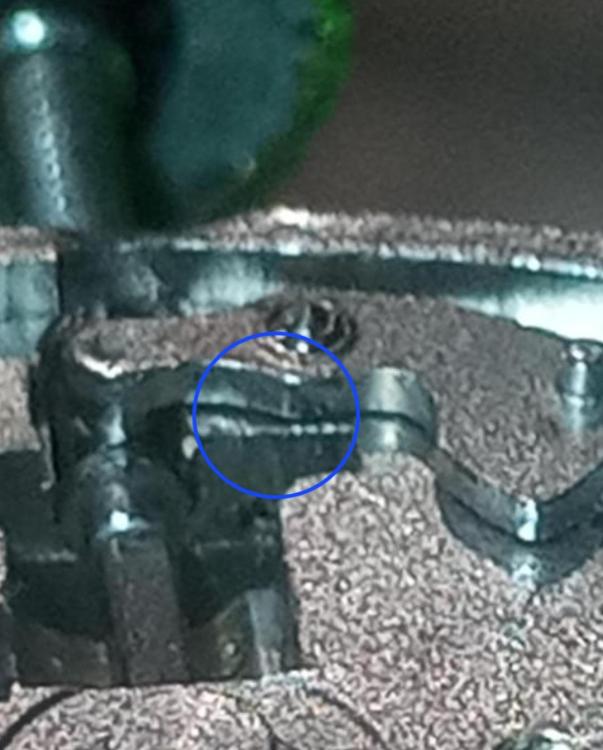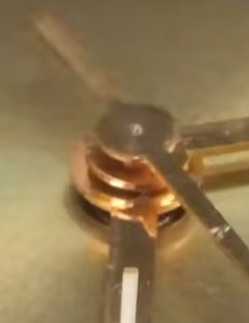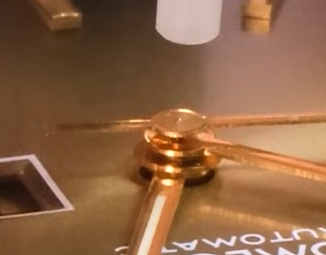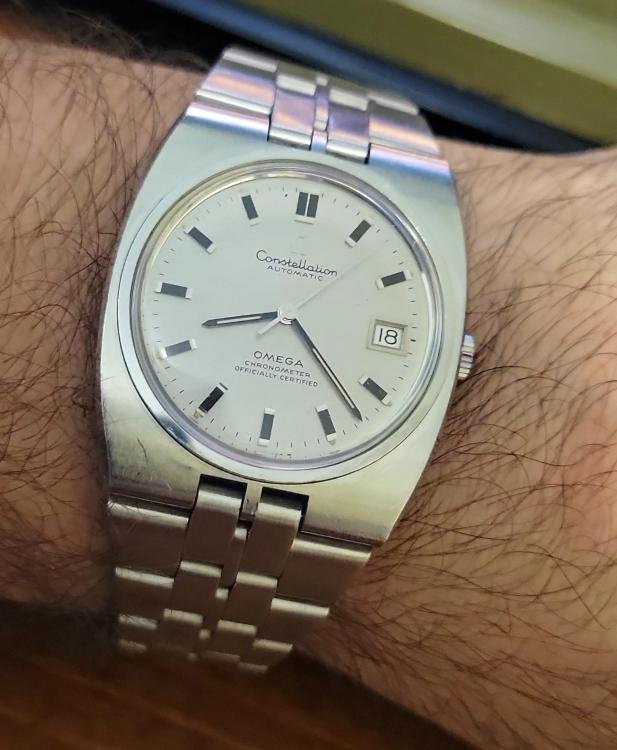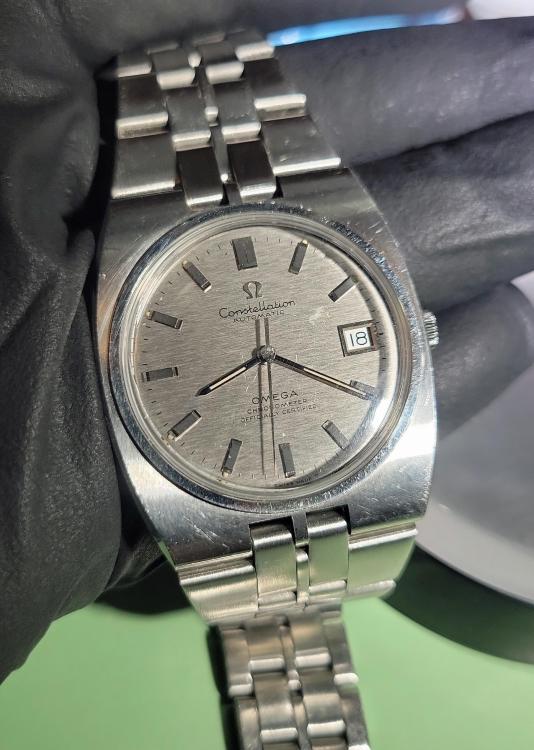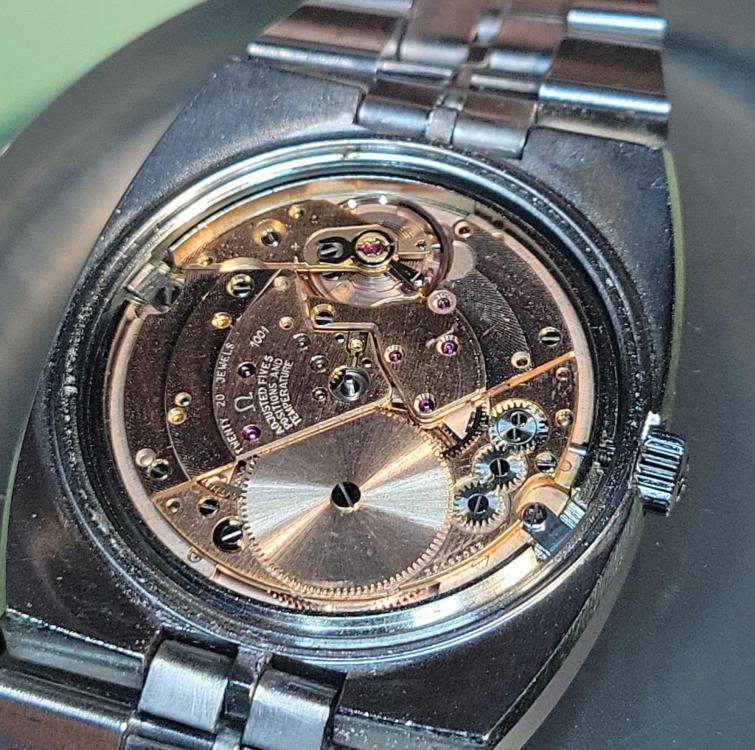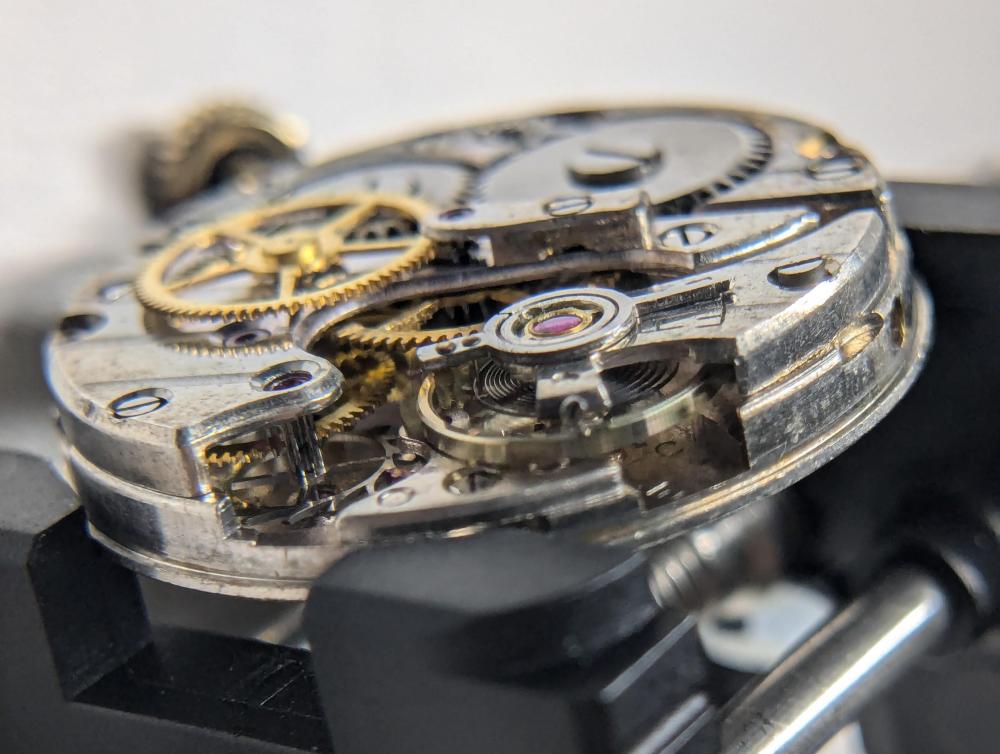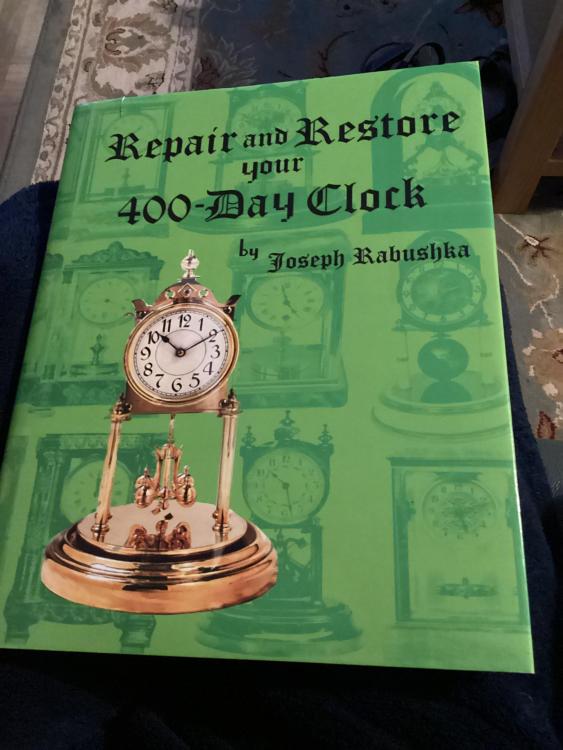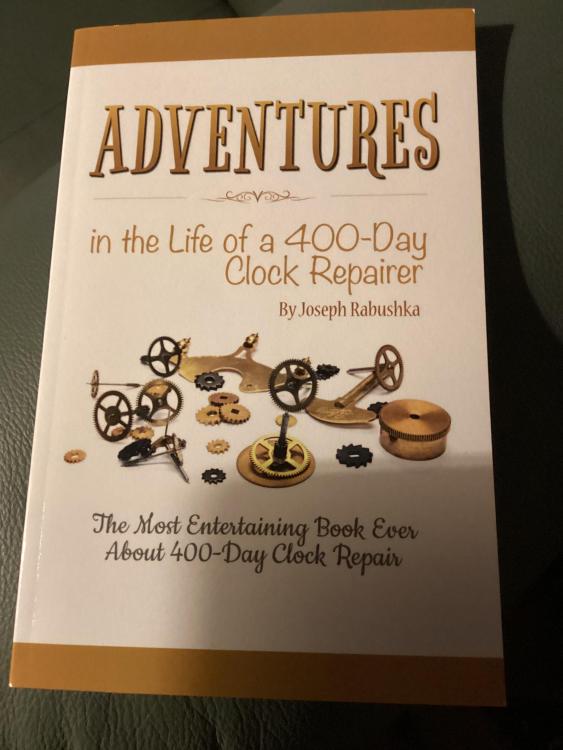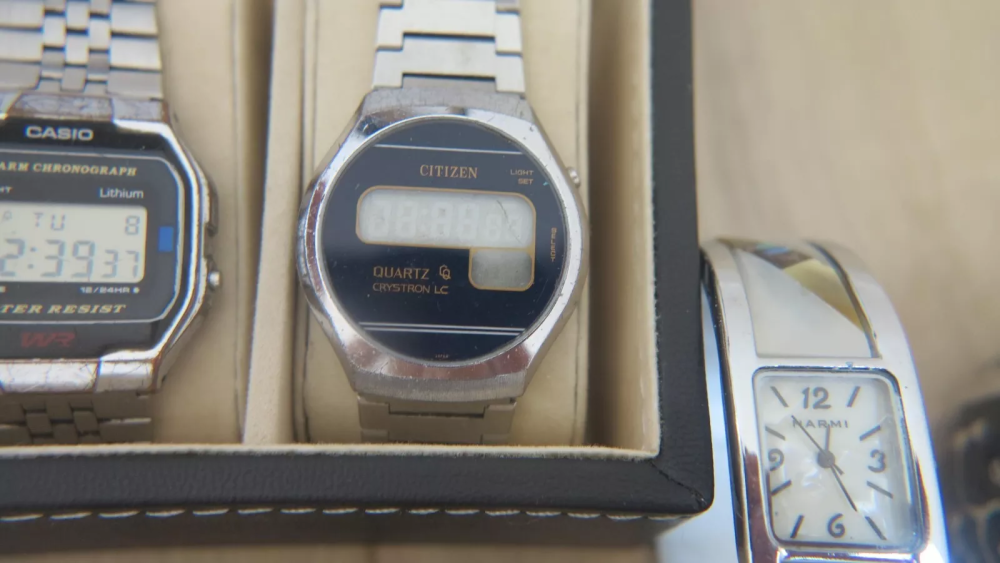Leaderboard
Popular Content
Showing content with the highest reputation on 08/19/24 in Posts
-
When you look at a 100 yo clock and marvel a5 the quality of the workmanship given the tools they had and mast likley had to make by hand, one thing goes through my mind, how long did it take for them to finish the clock, a year maybe two but if of or more men make the same clock probably six months. One the plates , one the escapement , one or two cutting wheels etc. now equate that with todays technology, to make the machine tools etc six months, top and bottom plate ma+hined and drilled minutes, the skill in todays work force is the toolmakers and CnC operators. Even the humble Timex took toolmakers to make the dies to punch and drill the plates. The point I am making is the skills are still there just changed. So each watch produced be it either old or new has its merits, depends on your point of view. A lot of watchmakers don’t touch the low end or working class watch as there is no money in it any more.once upon a time they would re staff a smiths empire for a fiver and make a profit, you used to get a packet of three staffs not any more. Times change but not peoples attitudes.3 points
-
No, you didn‘t. I was surprised about the replies. Long version: You could fill books with the correct answer. Short version: for your pendulum about 1 … 1.5 degrees. After the audible drop of the escape wheel the pendulum shall move another (roughly estimated) 0.5 to 1x the same distance. Frank3 points
-
3 points
-
Unfortunately I won't be back to the bench until Friday. I'll try to measure the shoulder then... going to be tricky where it's at. In the meantime a new stem has been ordered and on its way.2 points
-
2 points
-
No its not mad WW, its passion for something you enjoy doing. Something that almost everyone here will understand. I can see your side of it OH, plastic and rivets dont exactly spell out quality next to the craftsmanship of a well made clock. All timepieces have a place ( and i know whats coming ) and everyone's passion lays somewhere different.2 points
-
watchweasol, Timex and quartz watches I wouldn't touch the things. We would send those horrid Timex things back to Timex, as for quartz I would replace batteries but fiddling around with bits of plastic no thank you. Give me a 100 year old clock anyday.2 points
-
Another option you could try Col, though a bit laborious, is to try installing one train wheel at a time, checking the end and sideshake as you go. Lack of endshake is an obvious amplitude killer and can be seen on each wheel ,sideshake can be less obvious if only looking at one wheel at at a time, cumulative excess sideshake over the complete train can foul up the wheel and pinion meshing, can be difficult to pin point with it all in place , but introducing one wheel at a time makes it easier. Not just dial position checks so include crown positions.2 points
-
2 points
-
I wondered if it was a case of issues being more easily identified without having the visual restriction of dealing with such small parts as in watches. I remember visiting a small antique shop a few years ago in north Yorkshire when i wanted a 30's mantle clock for my fire surround shelf. Across the road they had their workshop, i told the owner that i wouldn't mind buying anything that didn't work as I'd love to have a go at fixing a simple clock. He said if i decided to take it up as a hobby and got good at it that I'd never be out of work, he had a customer waiting list of 3 years, that was just a simple village antique shop and clock repairer. His comments propelled me to where i am today. I'll post his contact details so forum members can make their complaints to him2 points
-
For fun, using the rate I estimate that the pendulum is circa 46 cm. I'm awaiting being miles out, hehe.2 points
-
I can't tell you as I would need the clock. But you can do it yourself by doing this. To determine the amplitude of a simple pendulum, you can use the following steps: Measure the length of the pendulum string or rod from the pivot point to the center of the pendulum bob. Displace the pendulum bob to one side and release it, allowing it to swing freely. Measure the angle between the vertical line and the pendulum string at the maximum displacement, which is the amplitude. You can also use the formula for the period of a simple pendulum:2 points
-
This caliber ( the whole movement) might still be readily available at material houses or ebay, even if its production ended years ago. Rgds Check prices on Ebay, gives you an idea. Always a chance to find NOS movements on Ebay2 points
-
Same here, but it fouls on the inside of the crystal, so I'm assuming it should be a little deeper. Looking at Stian's video, it does seem like it should go on a bit further, but his also springs in the same as mine, so maybe not? Yes, just as in the video, with the retaining spring sitting on the sloped shoulder of the seconds arbor. Okay, I adjusted the hands a bit and everything seems okay now. It sets a lot more easily than I'd expect, but I'm hoping that's just how this movement is. It's running in now.2 points
-
I think the part no for the screw could be 2624 and these from stemandstaff don't seem that expensive. https://www.stemandstaff.com/Omega-watch-movement-screws.hD/s405024p/Omega-screw-2624-for-setting-lever-spring-cal-560-561-562-563-565-600-601-602-610-613-750-751-752 https://www.stemandstaff.com/Setting-lever-spring-Omega.fD/s404675p/Omega-pressure-spring-for-setting-lever-470-471-490-491-500-501-502-503-504-505-550-551-552-560-561-562-563-564-565-600-601-610 some of the used listings I've found for the 1132 come with the screw. https://www.ebay.co.uk/itm/226287262858 Edit Just realised that the 2624 is for the 1110 and the screw you want is a 22551 point
-
If you know how to get the case back off people here may be able to identify the movement and/or suggest possible remedies… …there’s also this video with a Wenger that sounds like your problem?1 point
-
Well, there is not simple answer here. First of all it depends on the escapement type. If it is like Graham or Brocot types with no recoil, then smaller amplitude means better isochronism. Of course, I mean when clock is spring driven and no fusee or other spring torque equilising. If it is Swartzwald type with recoil, then best isochronism is achieved with certain amplitude, which usually is not small. The amplitude mainly depends on the escapement depth and on second place on the torque. If the depth is small, the amplitude is small and the pendulum is forced to oscillate much faster than it's own period. The rate strongly depends on the torque and with the torque decreasing, the rate decreases too and is getting closer to the own oscillation period of the pendulum. Increasing of the depth leads to increasing of amplitude and getting the rate closer to the own pendulum period regardless of the torque, and there is a depth where relatively isochronical work is achieved. But depth can't be increased more than the one where the movement is not able to work any more. And with the wear of the escapement, the possible depth decreases. So it is a problem to adjust the depth in movements with worn escapement (wheel teeth and anchor arms with deep traces of wear) Amplitude is different when measured in angle - the long pendulums have smaller amplitude The scale under the pendulum tip on the picture should actually indicate the reserve - 2 weeks, one week and then wind the clock again. But, it is not so reliable or something obligatory...1 point
-
Thank you both for the suggestions, you were right on the money about your diagnoses. I found that the regulator stud was installed too deep and pushing it down a little reduced the conical shape. Additionally, I applied a little twist near the stud as well which helped. Looking at it from the side, I can see that the hairspring moves back and forth between the regulator pins as desired. The watch is back to ticking with ~= 300 degrees amplitude. I think there are still a few issues relating to the hairspring but I don't really want to lose my progress thus far.1 point
-
This is probably the book by J Rabushka it is an excellent book as far as how to service a torsion clock , better than the 10th edition Horolovar book in that instance but you could really do with both because the Repair & Restore book doesn’t include all the plates or measurements for the torsion springs but if it’s the second picture then don’t buy it as it doesn’t help. Dell1 point
-
Make sure when you reinstall the balance on the watch, you loosen the screw that holds the balance stud in place to let it work itself flat. As far as the spring touching the regulator pins, you can slightly open the pins and move the regulator arm through its range of motion, and make sure it doesn't touch the hairspring at all. But I think it may just be the stud is mounted too high in the regulator arm1 point
-
I'm no expert on hairsprings but if it looks flat off of the balance cock but conical when on the balance cock, I would think that you have a twist somewhere, maybe near the stud. Maybe mount it to the cock but not onto the balance wheel and see if the hairspring hangs parallel to the cock.1 point
-
1 point
-
Hello and welcome to the WRT forum. You will find helpfull discussions on WRT forum along with links to data sheets .... etc, some in pdf , by adding, " WATCH REPAIR TALK " to your keywords. Rgds1 point
-
1 point
-
Welcome to the forum. Here's a link to the parts list along with a link to spares available from Cousins. https://www.cousinsuk.com/PDF/categories/4256_Tissot 2031,2037.pdf https://www.cousinsuk.com/category/filter/tissot-movement-parts Edit And a more technical guide. https://myretrowatches.co.uk/wp-content/uploads/2022/05/Technical-guide-Tissot-2031-2037.pdf1 point
-
Hi and welcome. This place is very friendly to newcomers, and if you post your Tissot questions over on the New to Watch Repair section along with good close photos the issues are encountering, the community will be able to help.1 point
-
1 point
-
you can also do this on a staking tool. although its a bit cumbersome. You use a stump to support the back of the seconds pinion. I'm in the process of making a stake that is threaded to accept different tips to press the hands on.1 point
-
Hi @Neverenoughwatches with me as you know I started on watches but found clock just as interesting and do what ever can me my way watches , clocks, 400day clocks you name it I did it as I am now in my 81st year is still use the same philosophy even Timex and quartz watches some people hate them some love them I found them interesting .and still doing them. Tools I love and information got a lot on watches ,clocks etc. mad I know.1 point
-
I meant those lol Pretty sure they compose some of the keyless components lol1 point
-
I think you'll find the clutch and pinion will take up a lot of what you think is slack.1 point
-
1 point
-
Ah so you have a wobbly stem Joe, never mind, it happens to us all eventually Does the stem feel particularly wobbly when its in the bore. Careful how you answer this.1 point
-
1 point
-
With me it was a case I found clocks more interesting. The workshop was well equipped and we always had loads of different types of clocks many high quality such as English Bracket, Longcase and loads of French clocks and carriage clocks.1 point
-
Always good to learn something from you OH , never thought about this before, the amplitude seems quite simply is just the angle of swing of the pendulum from rest . The same portion of a full circle that is travelled with a balance wheel. Haha I've learnt something about clocks yey I have a question, and before i ask its no offence or a reminder that might apply to anyone of a particular age because we're getting older. I understand that some folk have a preference for watches , pocket watches or clocks and some like all of them. For those that maybe had a watch preference first is there some kind of transition for some that takes place with age, eyes and hands not being as keen and nimble as they used to be. I asked WW a similar question when i first joined. I can see you're desperately trying to hold on to your title Rich , give it up mate I'm snapping at your heels , i guess at 7 feet long1 point
-
How about adding some rust back to the balance and pallet, this might be the lubrication ingredient we are all overlooking . Lol sorry Col bad joke, i can see you're getting frustrated with it. So how free is the train spinning col ? If there is more friction than normal , you'll see some abrupt motion reduction, sometimes it can be quite subtle though to make a difference it would be quite noticable. Can you post a 30 second or so vid of you winding in some power .1 point
-
As @Kalanag explained , make up a temporary system to gauge the performance of the clock. De Carles book. Practical Clock Repairing has a great deal on pendulum calculations, if you can lay your hands on a copy .1 point
-
Sounds like it has a negative setting system and it's out of the case. If there isn't a provision to put it in winding position, it will tend to lose amplitude or even stop as the cannon pinion is trying to turn the whole setting system.1 point
-
Hi. It’s as O.H. Says and is explained in De Carles book. In a perfect situation ar rest the pendulum should be dead center on the mark. Once the pendulum is started and reaches its natural rhythm as governed by the escapement the amplitude should measure the same both sides. You quite often find them off center to compensate for a badly adjusted escapement but that’s only on the indicator the amplitude/ period is the same within the clock.1 point
-
To help you here you have a list of weights for Cuckoo clocks but I don't know if it covers the Russian clocks. https://www.cousinsuk.com/product/cuckoo-clock-weights-mechanical1 point
-
Build a makeshift pendulum and find the right length by testing. Then find a nice one with the correct size. Chose the weights for a decent but not excessive amplitude (movement clean and lubricated).1 point
-
Please show us where the setting lever sits in the groove of the winding stem. Your problem might not be a worn bore but a worn stem or lever.1 point
-
It would've been nice if we had a picture of the exact watch. On the other hand You gave us a clue bench key. Typically in situations where people are using a bench key when the watch is out of the case the watch will go into setting mode. This is because the case has a sleeve which holds the stem in either winding or setting mode. When the watches out of the case it goes to into the setting mode. The problem with being in the setting mode out of the case is as you found out the watch doesn't have enough power to power all the setting mechanism. But some watches do have a method of putting them bac. k in the winding mode out of the case we would need to see the exact picture of this watch to see if it has that. Otherwise the only other solution is to put it back in the case It would really help if you gave us a picture but it did give us a clue. If this was basically a really tiny little pocket watch then typically when the pocket watches out of the case the watch goes into setting. Running a watch in setting mode would have a similar effect to what you have in other words you're trying to drive the entire setting mechanism. Some pocket watches had a way of putting it back in running mode out of the case otherwise try putting it in the case and seeing if that solves your problem.1 point
-
…the superior question is do you know how much one can be acquired for?: …as I write- $195us. I also see $295us (plus 3.99us delivery) OR less- make offer, act now!… and $1,500us but that one is ‘the last brand new one in the world!’…and has a box and is on us EBay… …and I don’t know how much his reasonably priced, keep it a year and maybe get it back Utah watch repair costs but I suspect it’s more in $$$ and hassle than Mercari… …I also see some other less expense Wenger models where there may be an opportunity to salvage the movement in a like for like swap for a WRT wk thru for the non-repairer OP…1 point
-
So far as I know, the movement in your watch is a quartz ETA, the problem you may have is finding a brand new movement of right calib and some NOS movement need cleaning . Plenty of movement that can be fitted in your watch, the problem is; date window and date disk must match. Most parts of quartz movement is plastic, a shock that breaks off the crown is unlikely to have left the plastic movement undamaged . This explains what your repairer said, he must have seen that the movement is ruined. A quartz movement is cheap and not worth repairing anyway. Us hobbiest like practicing on quartz movement as well, but that's not the route you want to go. Rgds1 point
-
We really have to work on our translation here and I hope you know what you're doing because this isn't exactly a beginner's watch to service and getting everything back exactly where it's supposed to be is a challenge the index wheel has to be handled preferably extremely carefully as it's very very easy to damage it along with those two fingers. Plus ideally you need some equipment that I didn't think you had?1 point





